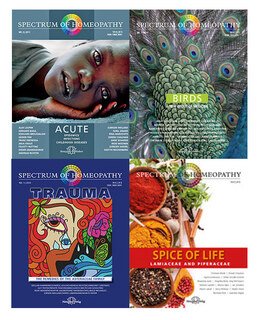Liste d'envies
 Sélection
Sélection
Votre sélection est une liste contenant des livres que vous aimeriez avoir. Amis et famille peuvent ainsi vous offrir le cadeau parfait.
Comment créer votre sélection?
Après vous être enregistré sur le site www.narayana-verlag.com, vous pouvez créér votre sélection. Pour ajouter un livre à votre liste, cliquer sur le bouton "Ajouter à ma sélection" sur la page du livre choisi.
Comment partager votre sélection avec famille et amis?
Sur la page de votre sélection, l'adresse internet que vous pouvez partager avec famille et amis est clairement indiquée. Avec cette adresse, ils peuvent consulter votre liste. Vous seul, par contre, pouvez modifier la liste.
Set - Spectrum of Homeopathy - Acute, Spice of Life, Birds, Trauma
€ 72,00
€ 9,00








